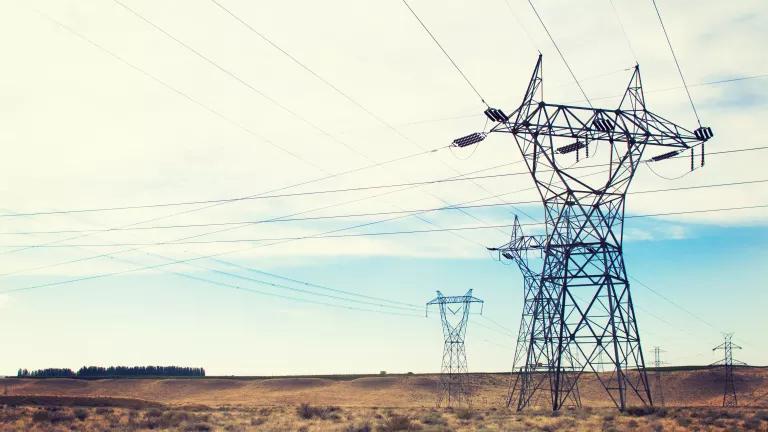Illinois EPA Drives in the Wrong Direction for VW Settlement

The state of Illinois is in danger of missing a unique opportunity to clean up its transportation sector. The Volkswagen settlement issued in 2016 and finalized last October is the result of the company getting caught foisting dirty diesel cars on the public. Based on the number of offending vehicles sold in the state, Illinois received approximately $108 million to clean up and modernize the state’s transportation sector. On February 27, the Illinois Environmental Protection Agency (IEPA) released a plan for how it intends to spend these funds without gathering public input.
By taking a scant three months to produce its plan, Illinois is rushing a process that was supposed to actively involve all stakeholders through public hearings. In contrast, other states have been diligently drawing up their public process plans for almost a year.
The current draft plan allocates nothing to build out electric vehicle (EV) infrastructure, such as public charging stations, while devoting more than $70 million of the $108 million pot, or 65 percent, towards upgrading or replacing locomotives and tugboats. That’s a considerably higher percentage being funneled to off-road vehicles than surrounding states. Ohio, for example, has allocated just $20 million out of its $75 million towards repowering and replacing off-road vehicles. It is concerning that IEPA chooses to prioritize off-road projects that rely on fossil fuels over electric trucks, buses, and vehicles, further delaying Illinois’ transition to a clean energy future.
Illinois’ Planning Process Is Rushed and Opaque
The IEPA’s Beneficiary Mitigation Plan (BMP) announced a 45-day commenting period (ending on April 13) that will allow the public to submit responses through written comments or an online survey. However, the IEPA has not held any public hearings to date, unlike many of its Midwest neighbors. As a result, this proposed process is far less transparent than was expected. Unlike other states in the Midwest, Illinois’ Volkswagen process involves no public meetings, which would have allowed a wider range of Illinoisans to shape the plan.
How Other Midwest States Involved Their Residents
In Ohio, the state held more than 100 meetings and conferences with stakeholders before releasing the first draft of its plan last December 7. In January 2018, Buckeyes could attend information sessions in Cincinnati, Cleveland, and Columbus, in addition to having 60 days to submit comments.
Minnesota solicited citizens’ input for more than a year through nine public meetings and four stakeholder meetings before drafting its official BMP. In addition, before accepting applications, the Minnesota Pollution Control Agency plans to host meetings and webinars regarding funding opportunities in the coming months.
The state of Missouri established a Volkswagen Advisory Committee, which members of the public can apply to join. In addition, the Missouri Department of Natural Resources has already held six public meetings in Jefferson City, Kansas City, and Springfield since last October.
Illinois, on the other hand, has not demonstrated much transparency or made a serious effort to engage the public. With more than $100 million and ten full years to spend the VW settlement funds, the IEPA should follow its neighbors’ example and take the time to involve the people who will be affected most by its decision—Illinoisans.
Electrification on the Back Burner in Illinois
As the largest source of greenhouse gas emissions within the United States, the transportation sector is in dire need of change. Electric cars, trucks, buses, and other vehicles not only eliminate harmful tailpipe pollution, they also significantly reduce overall greenhouse gas emissions that fuel climate change. No other vehicle technology addresses Illinois’ pollution problem as effectively as electric transportation. In the Midwest, Ohio and Minnesota have committed 15 percent of their Volkswagen funds (the maximum allowable) for investment in electric vehicle infrastructure. In stark contrast, the IEPA hasn’t allocated one cent toward the infrastructure needed to support EV growth.

A September 2017 report by the consulting firm MJ Bradley shows that the state of Illinois can expect benefits as high as $43 billion by 2050 through EVs. However, without meaningful commitments from state and local government to accelerate EV infrastructure, the growth of EVs within the marketplace will remain stagnant.
The Volkswagen funds provide an excellent opportunity for Illinois to reduce air pollution from transportation that threatens our communities—especially the most vulnerable—and reduce the greenhouse gas emission driving climate change. Indeed, reducing criteria air pollutants and reducing emission were two primary motivations behind the Legislature’s decision to approve the landmark Future Energy Jobs Act of 2016, which is accelerating Illinois’ transition to a clean energy economy. Illinois should continue to build on this clean energy leadership, take inspiration from surrounding states, and commit to cleaning up its air and electrifying its transportation sector.



